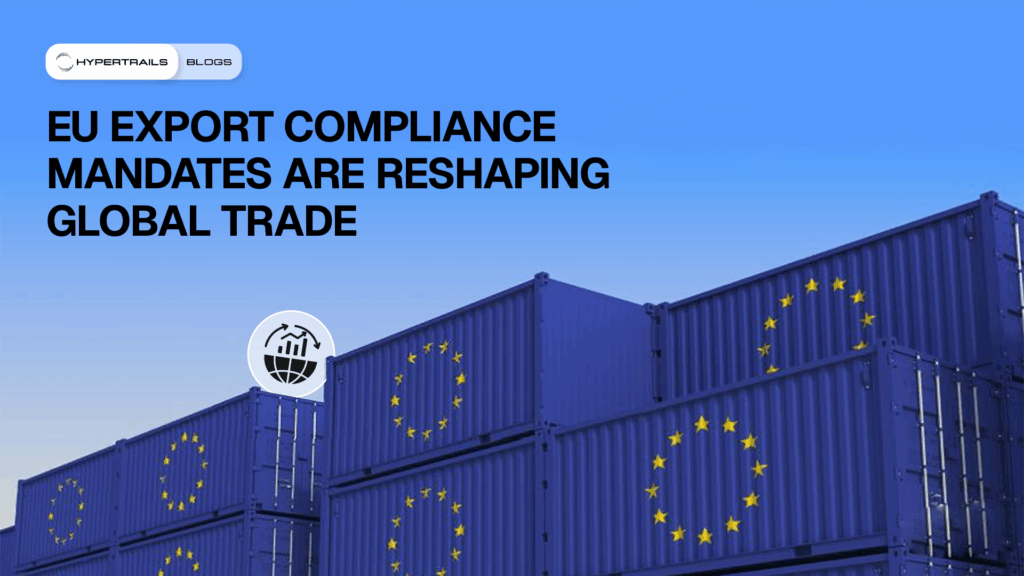
The European Union has significantly tightened its regulatory framework for 2025, creating complex compliance challenges for global exporters. Companies must navigate new requirements across dual-use controls, sustainability, carbon pricing, and sanctions enforcement to maintain market access. Below are a few regulations exporters ought to look out for.
Dual-Use Export Controls Tighten
The EU’s September 2024 Delegated Regulation expanded controlled dual-use items to include specific nuclear equipment, additional toxins and chemical precursors, and noise reduction equipment. Technical parameters for signal analyzers, converters, vibration test equipment, and telemetry equipment have also been revised. Exporters handling these newly controlled items must adapt licensing procedures immediately to avoid penalties. [1]
Mandatory Supply Chain Due Diligence
The Corporate Sustainability Due Diligence Directive now requires large companies (over 1,000 employees and €450 million global turnover) and non-EU businesses (with €450+ million EU turnover) to implement comprehensive supply chain monitoring.
Affected companies must:
- Conduct human rights and environmental impact assessments
- Implement corrective action plans for violations
- Eliminate forced labour from supply chains
EU authorities can now investigate and remove non-compliant products, creating substantial compliance risks, particularly for electronics, textiles, and agricultural exporters. [2]
Carbon Border Pricing Becomes Reality
January 2025 marked a critical transition in the Carbon Border Adjustment Mechanism (CBAM). Full emissions reporting using EU methodology is now mandatory, replacing previous default values.
Exporters of cement, iron, steel, aluminum, fertilizers, electricity, and hydrogen must:
- Report carbon emissions following precise EU methods
- Use the updated CBAM Registry portal
- Prepare for mandatory “authorized CBAM declarant” status (required by January 2026)
This effectively extends EU carbon pricing to imports, making carbon accounting a competitive necessity. [5]
Sanctions Enforcement Intensifies
The December 2024 “No Re-Export to Russia” [6] regulation requires exporters of sensitive goods (listed in Annexes XI, XX, XXXV, and XL) to include specific contractual clauses prohibiting ultimate Russian destinations. All contracts, including those signed before December 2023 must now contain these provisions to remain valid in 2025.
Exporters must:
- Demonstrate compliance documentation to authorities
- Report suspected breaches or circumvention
- Include contract remedies for non-compliance
New Import Controls and Documentation
Additional 2025 changes include:
- Improved organic product import controls requiring mandatory testing at EU Border Control Posts
- Updated EU Combined Nomenclature codes affecting customs declarations and duty rates
- Advance notification requirements for specified organic imports
Companies exporting organics or products with changed classification codes must adapt systems and documentation accordingly. [3]
Strategic Compliance Approach
Traditional siloed compliance approaches no longer suffice. The interconnected nature of these regulations requires exporters to:
- Implement integrated data systems tracking products from sourcing through delivery
- Conduct regular supply chain risk assessments identifying high-risk suppliers and regions
- Develop carbon accounting capabilities that align with EU methodologies
- Create documentation trails proving compliance across all regulatory areas
The Cost of Non-Compliance
Penalties extend beyond fines to include product seizures, market access restrictions, and reputational damage. With EU authorities increasingly coordinating enforcement actions, detection rates are rising significantly.
For global exporters, EU compliance is no longer an administrative exercise but a strategic business imperative requiring C-suite attention and cross-functional coordination. Companies that build robust compliance infrastructures now will gain competitive advantage through market access certainty and reduced regulatory risk.
On-Chain Compliance
As regulatory demands intensify, forward-thinking companies are turning to blockchain-based solutions like Hypertrails to address these challenges comprehensively. By creating immutable, verifiable records of product journeys from raw materials to final delivery, Hypertrails’ platform enables exporters to demonstrate compliance across all EU regulatory frameworks simultaneously. The system’s integration with existing ERP infrastructure provides the detailed documentation trails authorities increasingly demand while transforming regulatory burden into market differentiation. Beyond mere compliance, Hyperglade converts supply chain transparency into engaging product narratives that strengthen brand positioning – turning regulatory requirements into a competitive advantage through data-driven storytelling that resonates with both regulators and consumers.
Sources;
[1] https://policy.trade.ec.europa.eu/news/2024-update-eu-control-list-dual-use-items-2024-10-01_en
[4] https://www.strongandherd.co.uk/notices-to-exporters-2024
[5] https://www.maersk.com/insights/resilience/2024/12/04/new-regulations-in-2025
[6] https://www.customssupport.com/new-eu-export-regulations-0/
